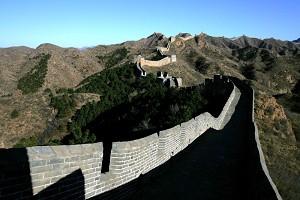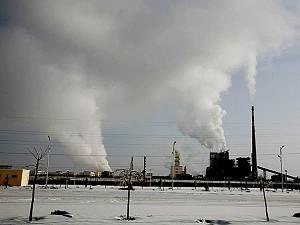The Bohai Sea, located on the northeastern coast of China, suffers from severe pollution. Oceanographic experts estimate it would take 200 years to restore the marine life to conditions that existed before China’s economic reform.
“The Bohai Sea has turned into the Dead Sea,” said Gao Zhiguo, Director of the China National Bureau of Oceanography’s Institute of Marine Development Strategy.
According to a Nov. 2, 2007, article in the Chinese newspaper Southern Metropolitan, Gao advocated for legislation to protect the Bohai Sea environment during the People’s Congress and the Political Consultative Conference meetings this year.
Gao said that the Bohai Sea region is becoming one of the top three economic centers in China. This has exerted unprecedented pressure on the ecological environment, resulting in severe pollution in the area near the seashore.
The polluted zone continues to expand, and the marine environment is increasingly damaged. Red tides and oil spills have harmed fish to the point of nearly complete destruction.
According to Gao, the Bohai Sea is the most seriously polluted oceanic zone in China. Every year, 5.7 billion tons of toxic waste and 2 billion tons of solid waste are disposed of in the Bohai Sea. Forty-three of the 53 rivers that flow into the Bohai are severely polluted.
China’s official statistics show that heavy metal content in the Bohai Sea is about 2,000 times the normal standards. No fish can be found within several miles of sewer discharge pipes.
The “China Marine Environment Quality Report,” issued by the National Bureau of Oceanography, for the first half of 2007 indicated that pollution near the discharge pipes continues to increase. The report also showed that 77.1 percent of the approximately 500 discharge outlets on the east coast of China have exceeded the allowed level of pollutants, reflecting an 18.2 percent increase from 2006.
Hou Baoyou, Deputy Chief of the Village Committee of Shuigou Village, Wudi County, Shandong Province, said that in 1995, water from the Zhangweixin River was potable. Now it can’t even be used for irrigation. Ducks and geese die shortly after contact with the water.
The Zhangweixin River is a tributary that runs into the Bohai Sea. Hou said of the fish caught in the Bohai Sea,:“As soon as you touch them, the scales immediately fall off. The fish are dead before even coming out of the water. Once a net is cast, it becomes very heavy, even too heavy to be hauled out.”
However, it isn’t the fish that causes the net to be heavy. It is trash and petroleum deposits. The spilled oil in the sea quickly stains the white net black.
Some officials and citizens from Shandong Province attributed the delay in cleaning up the Zhangweixin River to its “unique characteristic” of being in several provinces. However, the same can be said about all of the major rivers that flow into the Bohai Sea.
Shan Haibing, a fisherman at the Yanwei Harbor in Lianyungang City, Jiangsu Province, said: “It’s so filthy! Most of the sewage from Henan, Shandong, Anhui, and Jiangsu provinces is discharged into this river before it reaches the sea. I used to be able to make 40,000 to 50,000 yuan (US$5,366 to US$6,708) per boat. Now it’s gone down to only several thousand yuan. I can’t get any fish or mature shrimp at all. I can only find tiny baby shrimp.”
Mr. Ji, a villager from Touzeng Village, Binhai County, Yancheng City, approximately 30 miles south of Yanwei Harbor, said: “One year, the army recruiters came to town. However, all the youth here had an enlarged liver. Everyone failed the physical exam. In five years, everyone in this village will need to leave. If they don’t, they may not be able to survive.”



